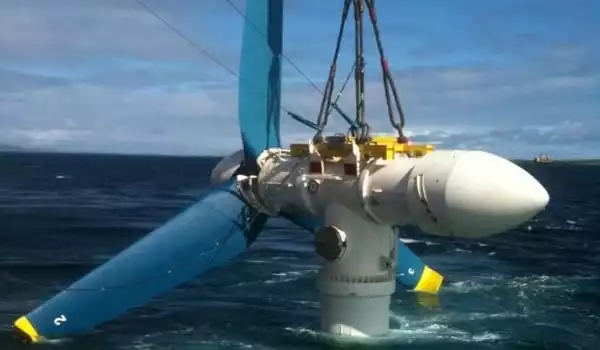A day before world leaders gather in Paris for COP26 to discuss the importance of clean energy, scientists from across the UK say that harnessing the power of the ocean’s tidal streams can provide a predictable and reliable means of helping to meet the country’s future energy demand.
According to new research, tidal stream power has the potential to deliver 11% of the UK’s current annual electricity demand and play a significant role in the government’s push for net-zero energy. Scientists from across the United Kingdom believe that harnessing the power of the ocean’s tidal streams can provide a predictable and dependable means of assisting the country in meeting its future energy demand.
However, in order for that to happen, government funding will be needed to accelerate innovation and drive down costs so that future projects can provide cheap electricity. And, according to the authors, such opportunities are not currently available due to the way the government’s renewable energy funding schemes are set up.
Access to government funding has previously aided in the installation of 18 MW of tidal stream capacity, which is roughly 500 times less than the UK’s current offshore wind capacity. To date, this relatively modest funding support has put the tidal stream sector on a steep cost-cutting trajectory. However, since funding has been removed, cost reduction has slowed. Extending such assistance is critical in order for it to become cost-competitive with gas turbines, biomass, and nuclear.
Our study shows there is considerable evidence to support an estimate that the UK and British Channel Islands’ tidal stream energy resource can provide 11 percent of our current annual electricity demand.
Dr Danny Coles
The study also looked into the potential environmental effects of such future developments and found no evidence that the next phase of tidal stream development will have a significant negative impact on the environment. Physical environmental consequences are expected to be orders of magnitude less severe than those caused by climate change.
The study, led by the University of Plymouth and published in Royal Society Proceedings A, comes just a day before world leaders gather in Glasgow for the COP26 conference to discuss the need for global clean energy agreements.
“Our study shows there is considerable evidence to support an estimate that the UK and British Channel Islands’ tidal stream energy resource can provide 11 percent of our current annual electricity demand,” said Dr Danny Coles, Research Fellow at the University of Plymouth and the study’s lead author. To achieve this, approximately 11.5 GW of tidal stream turbine capacity would need to be installed, whereas we currently have only 18 MW. It took approximately 20 years for the UK offshore wind industry to reach 11.5 GW of installed capacity. Time is of the essence if tidal stream power is to contribute to the net zero transition.”

The Pentland Firth and Orkney Waters, Scotland, and the Channel Islands have the highest tidal stream resource, but both would require major grid infrastructure to connect them to high-demand centers. In addition, because they are closer to existing grid infrastructure and demand centers, other sites on the South Coast of England and in the Bristol Channel could be developed more easily.
The UK government recently identified variable generation grid integration as a key challenge as renewable energy penetration grows. Importantly, this new study discovers that the cyclic, predictable nature of tides can provide grid benefits over alternative variable power technologies like wind, such as supply-demand matching. The UK government has already committed to a Net-Zero greenhouse gas emissions target by 2050, and in 2017, renewable technologies such as wind and solar power generated nearly 30% of the UK’s energy.
However, electricity demand is expected to more than double by 2050, and while wind and solar will be the primary contributors, a diverse generation technology mix will be required to keep the lights on.
“This paper provides such an important and timely message for the world, and especially the UK government, to fully understand the strategic use of predictable tidal stream energy,” said co-author Professor Beth Scott of the University of Aberdeen. The United Kingdom is currently leading the world in both technological and environmental research aspects of tidal stream energy developments, and maintaining that lead now will significantly advance the United Kingdom’s goal of sustainable net-zero energy production.”
“This is an extensive review on the state of the art and opportunities for tidal stream energy,” said another co-author, Professor Philipp Thies of the University of Exeter. Although there are still engineering challenges ahead, this low-carbon energy source is technically feasible and an important component of future net-zero energy generation.”





